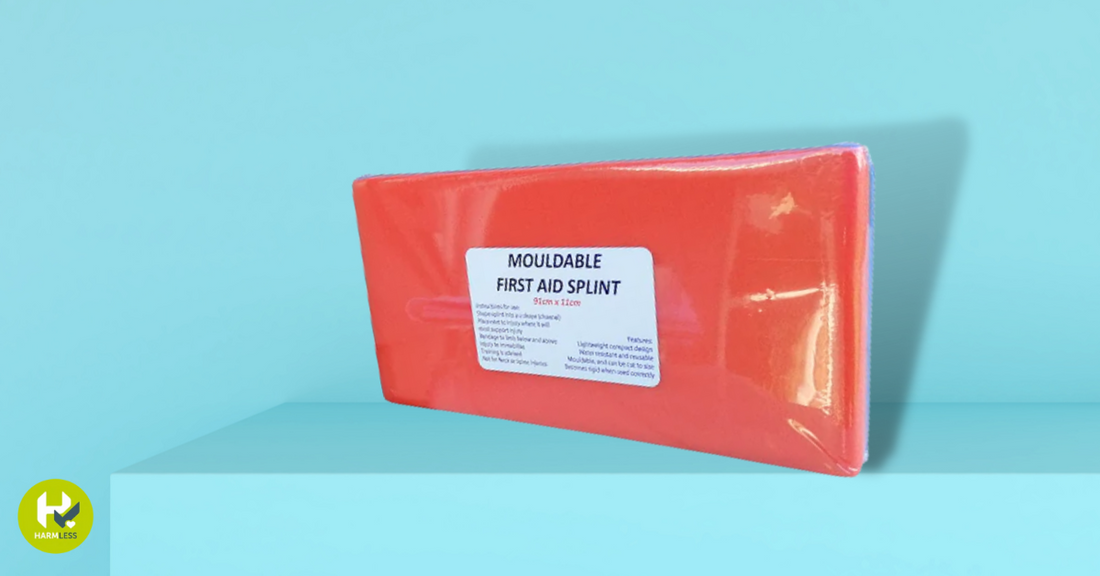
Product Spotlight – Splint
Share
A splint is a critical piece of equipment in your first aid kit if you are doing any activities that could result in a sprained, strained or fractured arm, leg, wrist or ankle. So, if you are likely to be walking across rough terrain, playing sports, riding bikes or horses, wrestling with friends, jumping off swings or even driving a car, we think you should at least consider including a splint in your first aid kit.
What does a splint do?
A splint helps to immobilise a suspected broken bone to prevent the break from becoming any worse when the patient eventually needs to be moved. In effect, splints act as a temporary cast until medical assistance can be given.
Unlike many supplies in first aid kits, splints don’t need to be sterile and therefore do not have an expiry date. So, once it is in your kit, it should be there to stay (unless of course it gets lost).
Our splints are lightweight, versatile, reusable, water resistant, and mouldable. They are designed to be shaped into a channel (U-Shape) to support and immobilise suspected fractured limbs and are easily secured in place using tape or bandages above and below the injured area.
Tips for using a splint
- Perform our DRABCs (Danger, response, Airway, Breathing, Circulation (bleeding)
- Remember to attend to DRABC before treating any potential broken bones
- DON’T attempt to straighten a broken bone that is bent or showing through the skin.
- DON’T attempt to align bones or joints - leave that for the professionals.
- DON’T attempt to move the patient unless necessary for their safety
- If any broken bones are showing through the skin, cover them with a clean dressing
- If you are unsure if a bone is broken, assume it is and splint it
- Before, during, and after application of the splint, check circulation. If the limb starts to change colour, or there is a loss of sensation or feeling,or there is numbness or additional pain, these could be indications that the splint has been applied incorrectly (usually too tight).
Applying a Splint
- If available, provide additional soft padding between the splint and the broken limb
- Place the splint under the suspected broken bone taking care to minimise any movement to the limb. If possible, extend the splint to the joint above and below the suspected fracture.
- Tie or tape the splint to the injured limb so that it is supporting the injured area
- Use tape, a crepe bandage, a self adhesive bandage or cloth to secure it in place. It should be snug, but not too tight
- Check regularly to ensure the patient’s circulation hasn’t been affected
- Keep the limb/patient still until medical help arrives
